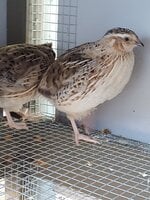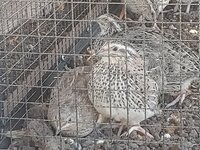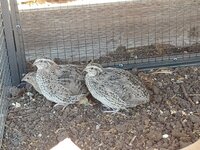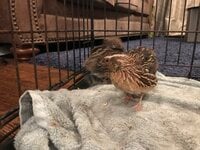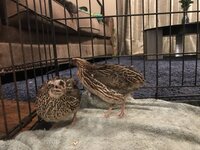CoturnixComplex
Crowing
- Nov 16, 2018
- 1,749
- 9,898
- 471
The falb-fee genes basically suck all the warm tons out of the normal pharaoh pattern, turning it into a striking cream, grey, and black bird.
Theoretically, this is an incomplete dominant, meaning that birds with only one copy of the gene will express the color, but birds with two copies will look different/more intense. I have not been able to compare heterozygous vs. homozygous birds in person yet.
It's also a feather sexable pattern - males will have a solid cream chest while females will have the characteristic spotting.
falb-fee chick (lower left) next to pharaoh chick (upper right)

a few juveniles

male

female
[Will edit pic in shortly, do not have a good one]
Have you got this color? Want to know where to find some? Noticed anything unusual about breeding it or any particularly interesting combinations with other colors? Have pictures to share? Join in!
Theoretically, this is an incomplete dominant, meaning that birds with only one copy of the gene will express the color, but birds with two copies will look different/more intense. I have not been able to compare heterozygous vs. homozygous birds in person yet.
It's also a feather sexable pattern - males will have a solid cream chest while females will have the characteristic spotting.
falb-fee chick (lower left) next to pharaoh chick (upper right)
a few juveniles
male
female
[Will edit pic in shortly, do not have a good one]
Have you got this color? Want to know where to find some? Noticed anything unusual about breeding it or any particularly interesting combinations with other colors? Have pictures to share? Join in!




